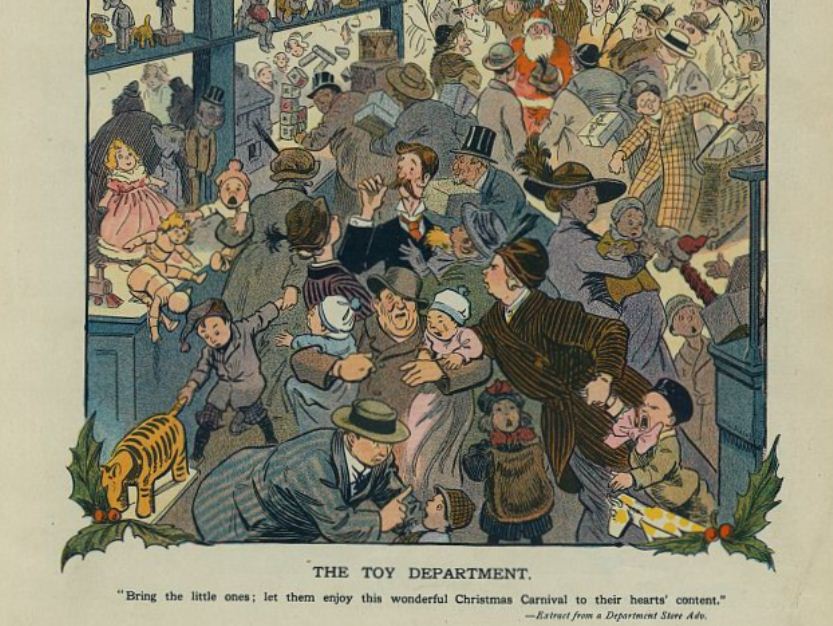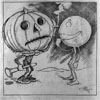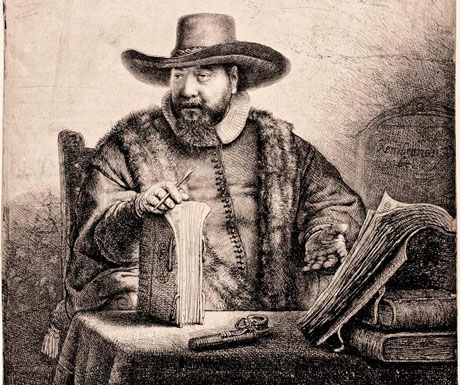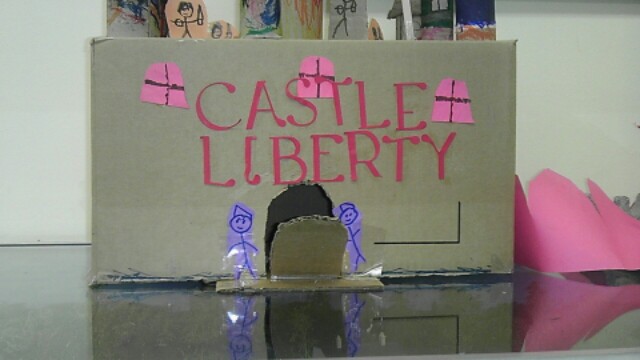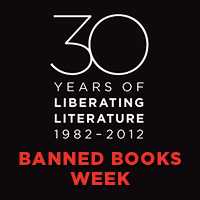The day after Thanksgiving has become the biggest shopping day of the year in the United States, earning the nickname “Black Friday” to set it apart from all the other manic shopping days leading up to the December holidays.
As it turns out, that term is just as loaded as your minivan was at 4 p.m. that day.
The nickname appears to have gained its current meaning around 1961, when it began to show up in publications around Philadelphia. Supposedly police officers there began using it in regards to the traffic headaches caused by the shopping frenzy.
Another theory has the term originating with store employees in the area, who dreaded the long hours and frenzied pace of the day. But the modern usage seems to depend on an old accounting practice of marking profits in black and losses in red—it’s Black Friday because retailers finally move enough merchandise to get “in the black” for the year.
Regardless of which theory appeals to you, the name “Black Friday” takes on a life all its own among writers. A reading list of the books by this name reveal how many sinister universes have sprouted from the same phrase.
Mega-popular suspense novelist James Patterson is responsible for a Black Friday. His book focuses on Wall Street, terrorists and the Cold War in the late 1980s. These days it might serve as a nostalgia trip through bygone paranoia.
Murder on Black Friday, by Patricia Ryan, takes us back a little further — to 1869, where we follow a Gilded Age governess as she unravels the mystery behind slayings following a major market collapse, also known as “Black Friday.”
Black Friday: Exposed by Ashley and JaQuavis jolts us right back to modern New York City: A drug dealer wanted for a shooting in a Long Island nightclub must silence the only woman who witnessed the deed. What, if anything, this has to do with doorbuster deals or economic peril is unclear.
Then there’s the 2009 novel Black Friday by Alex Kava, which follows an FBI profiler as she investigates a terrorist attack at a shopping mall on that fateful shopping day. Pick this one up if you want to put the stress and carnage of your own high-stakes shopping into perspective. Hopefully your shopping expedition didn’t involve a body count.
This year not only marks 75th anniversary of the publication of The Hobbit, or There and Back Again, but 2012 will also bring today's generation closer to the beloved storyline with the December release of Peter Jackson's The Hobbit: An Unexpected Journey.
The stories of J.R.R. Tolkien’s Middle Earth are familiar to just about everyone on the planet by now, thanks to the Lord of the Rings films directed by Peter Jackson. There was a time though when his books were more of an underground phenomenon, associated more with hippies than Hasbro. How did this change come about?
The Hobbit (as it is best known) was originally published in Britain in 1937. It was very well reviewed and quite popular so an American edition soon followed. There was a second printing and it seemed that the book was on course to becoming a modern classic. However, the advent of World War II saw the rationing of paper and no further editions were published until 1951. The title had lost its momentum, but sales were good enough that a third edition was released in 1966. This time, the adventures of Bilbo Baggins and his call for peace and brotherhood against the common enemies of hate and greed hit a nerve. The Hobbit and its sequels, The Lord of the Rings trilogy, became part of the 1960s counter-culture.
No film, no matter how good, will ever live up to my teenage imagination as I read those books in the 1970s. I was too young to really understand the significance of the anti-establishment movement but I was certainly old enough to know a good book when I read it. Not even playing Dungeons & Dragons could satisfy my inner Legolas (though being a teen, I felt more like Gollum). Reading them again is always a joy and I hope generations to come will appreciate the words of J.R.R. Tolkien as much as they appreciate the films of Peter Jackson.
Are you planning to read or reread the book in honor of the anniversary? Are you planning to watch the movie?
Sandy – it weakened from hurricane strength before it made landfall – is far from the only major storm to hit the New York City and Long Island region over the last half-century. But the storm that set the bar for East Coast carnage was the 1938 hurricane, which struck at a time before meteorologists had even begun to name substantial tropical storms.
It hit on Sept. 21, 1938 as a category 3 hurricane, its sustained winds topping out at a stunning 121 mph. Fortunately for New York City, its eye crossed over Long Island and into New England 75 miles to the east. Ten people died in the five boroughs, and floods knocked power out north of 59th Street in Manhattan and in all of the Bronx. High winds also destroyed 100 trees in Central Park.
The storm devastated Long Island, Connecticut, Rhode Island and Massachusetts, eroding beaches and sometimes carved new channels into the coastline. The death toll reached nearly 200. By contrast, Sandy is reported to have killed 110 in the United States, including at least 41 in New York City.
My own father experienced the 1938 hurricane as an 8-year-old in Connecticut. He and his father explored the wreckage after the storm passed, salvaging a massive chunk of mahogany from the remains of a luxury yacht and building it into a flat-bottomed fishing dinghy that they used for years. That anecdote, of widespread wreckage lingering for days, seemed like something out of another time until Sandy’s storm surge ripped massive swaths of the Rockaway boardwalk off its concrete stanchions, flooded the subways and sparked fires that destroyed dozens of homes.
So yes, some things have changed after seven decades, but some remain the same. Westhampton, L.I. resident Arthur Raynor was 18 when that hurricane struck. In The 1938 Hurricane As We Remember It: Volume II, which was prepared by the Quogue Historical Society and Westhampton Beach Historical Society, he recalls the lack of public information in the days or even hours leading up to the destruction.
“Weather coverage of that day was not anything like what is available today,” he wrote in 1998. “For instance, no satellite, radar, or anything except ship reports. The spread of this information to the public was limited and most people didn't pay a lot of attention, since Long Island weather never seemed to fit the pattern of the continent most of the time.”
Other observations sound depressingly familiar, like the extended loss of power and communications to many communities. “It was that way for a week afterward because the power companies had worked out this really great plan to help each other,” Raynor wrote with some sarcasm. “The way it was to work was, when a hurricane appeared to pick a place to come ashore, let's say like in this case around Cape Hatteras, or Norfolk, then the New England companies would send every man and truck they could spare to that point ... and that's where they were on the way to when the thing jumped from a forward speed of 15 MPH to 45 MPH, and fooled everybody.”
One thing I doubt we’ll see again will be the vital contribution New York’s state animal made to mitigating the storm’s terrible fury. At Stony Point in Rockland County, more than 500 beavers in Bear Mountain State Park worked furiously to reinforce their dams as the floodwaters rose, saving critical (human) infrastructure in the process. Author Everett Allen chronicles this in his 1976 book, A Wind to Shake the World. “John J. Tamsen, superintendent of Bear Mountain Park, and William H. Carr, director of the Trailside Museum, maintained by the American Museum of Natural History, credited the beavers -- who cut down trees all through the night of the hurricane to reinforce their wood-and-mud bulwarks -- with having saved three arterial highways from serious flooding, preventing the certain destruction of at least one bridge, and retarding the erosion of hundreds of acres of soil. Carr said had it not been for the beaver dams ‘backing up perfectly terrific bodies of water, in some cases, more than 200 yards across,’ Long Mountain Road, U.S. Highway 6, and the Johnstown Road would have been transformed into rivers for distances of up to a quarter of a mile.”
Want to learn more about the 1938 Hurricane? Check out Sudden Sea by R.A. Scotti.
Just a couple of days after a hurricane devastated Queens’ waterfront communities and left many others without power or heat, Queens Library’s Book Bus rolled up and parked in front of the Peninsula Community Library. In the midst of all that devastation, it seemed almost frivolous. Who is thinking about borrowing a novel when you don’t have food or water? That’s when the true value of the library in the community shone.
That library is one of four that sustained severe storm damage and is temporarily closed, pending repairs. The library was adamant about getting the Book Bus out there the moment the first responders gave the all-clear. The scene was surreal. Broken glass, pieces of wreckage and sand were everywhere, of course, but the most disturbing were the people who were walking up and back along the street, looking exhausted and shocked. They just did not know what to do next.
When the Book Bus pulled up and staff began inviting people in and engaging them in conversation, profound problems poured out. Many, many wanted to know how and where to apply for FEMA grants or where to get emergency supplies or shelter. Library staff had referral information in their hands. Others had more complex needs. A woman needed a supply of her medication. She had just called in a refill to the pharmacy, but the storm hit before she could pick it up and the pharmacy had been destroyed. The nearest store in the same retail chain was several miles away. She had no transportation, no working telephone. Library staff had referrals to emergency medical resources for her. A woman rushed over with her laptop. She was days away from taking the final exam of an online course that was absolutely necessary for her to keep her job. She now had no internet connection. Could the library help? Staff were rigging up a wifi hotspot and told her to come back the next day so she would be able to finish her course work. Someone else said her 8-year old daughter had been re-located to relatives out of the area and was terribly upset, having been uprooted and sent away so abruptly. The mother said the child bonded to the Children’s Librarian. Could the child speak with her? Library staff took the contact information and promised to do their best. And the tears -- people just burst into tears. It was as if they had been waiting for someone to let them cry in a safe space.
By Day #2, the Book Bus had become a depot for loads of donated clothing. The staff set up ad hoc programs for children in the parking lot. Stressed, exhausted children sat on an old mattress listening to story time and doing arts and crafts while their parents rooted through piles of old clothes looking for enough to keep warm. Temperatures drop sharply at night. Another storm is predicted within days.
So here’s the pivotal question: if, as some say, libraries are being threatened by the internet, which website is going to provide service like this?
Few things are as scarily satisfying as a good ghost story or a gothic horror tale involving the discovery of some vast, dark secret in a forgotten nook. Most of us know the famous practitioners of this genre. Edgar Allan Poe is celebrated for his stories of murder, death and eerie revenge. Stephen King’s bottomless imagination has given us a haunted resort hotel, a demonic car, a demon clown, and far too many other tales to list here.
But let’s dig a little deeper to find some other excellent writers who deserve their due.
Shirley Jackson’s The Haunting of Hill House set a standard for ghost tales in the late 20th century. Her four main characters resolve to stay at the titular home in an attempt to encounter the supernatural. It’s a psychologically intense book that questions whether such hauntings occur from without or within.
Further into the peat bogs of the past, we find Richard Barham Middleton, a British poet who worked as a bank clerk and led a rather short, unhappy life. His short story, The Ghost Ship, is one for the ages, melding classic supernatural imagery with a distinctly British, keep-calm-and-carry-on attitude toward the ever-present spirits of the departed. And you can read Middleton’s excellent On The Brighton Road, filled with dark humor about the ghastliness of waking life, in Famous Ghost Stories, one of our classic anthologies.
The same anthology contains The Phantom Rickshaw, a colonial, Anglo-Indian ghost story about the psychic costs of promiscuity and emotional cruelty. It was written by Rudyard Kipling, celebrated author of The Jungle Book. He, too, carries a wry sense of humor, wondering at one point what the ghost of a wealthy woman would pay her team of spectral servants.
These tales of ghosts and horror imply an orderly supernatural universe concerned with settling the debts of the waking world. But H.P. Lovecraft ripped away all these notions of coherence. Lovecraft is a touchstone among geeks of many disciplines, and his indelible Cthulu mythos has become so pervasive that traces of it made it all the way to Guillermo Del Toro’s big-budget film Hellboy.
The story that introduces this universe, Call of Cthulu, is a tightly constructed ball of horrifying sequences. Beware—a bit of racism tends to ooze at the margins of his breathless descriptions of brutal cult rituals—but Lovecraft eagerly expands the concept of horror beyond notions of morality and punishment to something primal, transdimensional and utterly unknowable.
Of course, with the Internet at our fingertips, these authors are far better-known than they were in the decades immediately after their deaths. Lovecraft is no exception, but his rehabilitation started well before the widespread electronic sharing of Cthulu fan fiction and “Hello Kitty”-themed illustrations of that tentacle-faced elder god. In 1977, 40 years after his death, Lovecraft’s fans pooled their money and bought Lovecraft his own headstone for the family tomb. Considering his fondness in fiction for the worship of long-dead elder creatures, perhaps he would have approved.
Art lovers had a lot to fret about recently: The Associated Press reported that on Tuesday, October 16, thieves broke into a Dutch museum and stole seven paintings by legendary artists such as Picasso, Monet and Matisse. The haul could be appraised in the hundreds of millions of dollars.
Not that the thieves will ever see that kind of money. Wander over to Queens Library’s adult nonfiction section and find out why in Stealing Rembrandts, a fascinating account of the many, many thefts of the Dutch master’s works.
In simple, direct sentences, security expert Anthony Amore and former Boston Globe reporter Tom Mashberg explore the realities of art theft, which is surprisingly common.
The first thing you learn is that there are no supervillains amassing private galleries of stolen masterpieces – nor dashing gentleman thieves dodging laser beams and rappelling into the main atrium. That myth seems to have emerged with Dr. No, the 1962 James Bond film in which Sean Connery’s character discovers a stolen Goya painting deep inside the titular character’s lair (read the book’s introduction to find out the ridiculous true story of the theft).
That doesn’t mean the figures involved in these thefts aren’t colorful—and frequently larger than life. One of the most prolific art thieves of recent memory was a French waiter who stole more than $1 billion in art from 172 European museums between 1995 and 2001. His motive: Love. The man put the items in his bedroom at his mother’s house. There’s an astounding epilogue to the story, but I’ll leave that to you to read.
On the other end of the spectrum was Martin Cahill, an Irish crime boss who organized the 1986 theft of 18 works of art from a diamond heir’s mansion. Cahill may have stolen the works to use as ransom, to spite the Irish government, or to embarrass the aristocracy—no one is really sure, and since the IRA killed Cahill in 1994, he can’t explain. But evidently he cared little for the appreciation or upkeep of the immensely valuable works.
The bottom line? Art masterpieces are relatively easy to steal, but incredibly difficult to sell properly. Amore is now head of security at Boston’s Isabella Stewart Gardner Museum where a massive 1990 art heist took place, so he may have his own motives for spreading this message. But he and Mashberg provide ample evidence to back up this claim: “Time and time again, robbers, fences, and their associates find that conducting a heist or meddling in its aftermath leads to headaches, betrayals, bad publicity, police surveillance and, of course, prison time. Better in the long run to steal the money from the museum’s donations box than its famous works of art.”
Hungry for more real-life heist stories? Check out the books King of Heists or Ballad of the Whiskey Robber. Want more escapist cinema? Check out the art-heist film Topkapi.
Written by Jeremy Walsh
This week the children at Broadway made a Castle diorama using primarily recycled materials, such as a cardboard box and toilet paper tubes. We also used markers, crayons, glue, and a good dose of creativity! Some of the kids even made a fire breathing dragon out by recycling an old cardboard tray, markers, and construction paper. We have our creation "Castle Liberty" boldly on display in the middle of the Children's room.
The topic of “my first album” seems so quaint and odd in this modern age of immediate downloading of virtually any song you could imagine, streaming audio, and file-sharing. However, there was a time not too long ago when music had to be purchased on a disc. That disc of vinyl or aluminum was generally called a “record” and a record of new material by an artist or group was known as an album. Most people my age starting buying albums in high school and at that time and in that place, rock music was king—from AC/DC to Led Zeppelin, prog rock to southern rock—if you weren’t rocking you were weird.
Thanks to older siblings who spent their money on a variety of albums, I was not unaware of the current trends in popular music. But as they left for college and took their albums with them, I was left to start my own collection. It was 1979, I was a year away from college myself and I had no musical identity to call my own. Hand-me-downs of Broadway musicals and the Beatles album “Magical Mystery Tour” just weren’t going to cut it. It was then that a friend told me of a band with a new style and a new dance: The B-52’s. I hadn’t heard of them, but I trusted my friend’s taste and went to check the group out.
The B-52’s classic hit “Rock Lobster” is a staple of any 80s party and many wedding receptions now. Back in 1979, it was a revolution, a call to arms, a rebellion against the macho “rawk” that ruled the young adult universe. I went to the local Sam Goody’s (a record store chain in malls) and found the bright yellow album. I scanned the notes on the back cover for clues. The B-52’s were a mix of men and women and some of the instruments they were credited with playing (for lack of a better verb) were a bit unusual: a walkie-talkie, a toy piano, and a smoke alarm to name a few. As a science fiction geek, I was immediately drawn to two song titles, “Planet Claire” and “There’s a Moon in the Sky (Called the Moon)”. I must have looked at the album for 20 minutes before deciding that my record collection was going to start with this.
Back at home, I removed the plastic, slid the album out from the inner sleeve (also plastic), and put it on my record player. From the first telegraph tappings of “Planet Claire” to the party crowd sounds fading out at the end of “Downtown” (a Petula Clark cover), I was hooked. By the end of the day, I had all of the lyrics memorized and I was hungry for more. Soon albums by Blondie, Devo, and the Ramones joined the stack. David Bowie’s “Ziggy Stardust” and a collection of British bands called “No Wave” were also purchased and consumed. I was ready for college. I was not, however, ready for my roommate who worshipped southern rock and hated the B-52s. That’s another story.
So, what was your first music buying experience?
In honor of the 30th year of Banned Books Week—a time to celebrate the freedom to read and speak out against censorship—a Queens Librarian has put together this banned-book trivia challenge for you! Let us know how you score, by telling us in the comments. Note: Queens Library proudly carries all of the books included in this quiz.
1. A PG-13 movie version of this book is currently in a limited number of theaters and getting good reviews. It will go nationwide on October 5. It’s a popular high school, coming-of-age story by a first-time novelist. A New York high school overturned a ban request from a parent who stated that the book deals “graphically with teenage sex, homosexuality and bestiality,” however, the book has been successfully banned in other schools across the country.
Can you guess? Click here to see the answer.
2. This book was removed from a summer reading program in Michigan after parents complained about its “foul language.” It tells the story of an autistic child and the death of a neighborhood dog. In 2004 it won the Boeke Prize and in 2003 it won the Whitbread Book of the Year award.
Can you guess? Click here to see the answer.
3. A longtime member of the banned books list, this semi-autobiographical science fiction novel has the protagonist time traveling to important events and milestones in his life, including the bombing of Dresden in WWII. It has been called pornographic and has been cited for glorifying drinking, cursing, and premarital sex.
Can you guess? Click here to see the answer.
4. This autobiographical novel, with illustrations, tells the story of a young cartoonist who leaves his Indian reservation school in order to pursue his life and studies in the all-white world of the neighboring school. This young adult favorite has been banned for “pornographic language” and depicting scenes of sex and violence. It won the National Book Award in 2007.
Can you guess? Click here to see the answer.
5. This series of illustrated books for grade schoolers has often been challenged and banned by those who find that it is insensitive, unsuited for its intended age audience, and that it encourages children to disobey authority. The hero of the books is actually a hypnotized adult, Mr. Krupp, and the boys who are responsible are George and Harold.
Can you guess? Click here to see the answer.
6. This series of books that are enjoyed by all ages and are the basis for some of the most popular films of all time have been banned for promoting witchcraft, setting bad examples for youth, and for being “too dark.” Although most of the bans have since been overturned, there are still schools and libraries where these books and films are not welcome.
Can you guess? Click here to see the answer.
7. This beloved classic novel and movie is often on readers’ “Top 10” lists of their favorite books. It’s a story of growing up in a southern town in the 1930s and the trial of a black man accused of attacking a white girl. It is one of the most banned books in American history for “offensive language and racism,” but it won the Pulitzer Prize in 1961.
Can you guess? Click here to see the answer.
So, how did you do on our quiz? Tell us in the comments.
Photo Credit: American Libraries Association, ALA.org/BBooks
Follow Queens Library on Facebook to see some of the creative banners we've designed for Banned Books Week, like the image below.
At Steinway library we hold our weekly composting program and now, more than ever, it has become super successful. This week we had 27 drop-offs and have collected over 185lbs of food scraps, all just under three hours! It really is amazing to see so many people conscious of their waste and eager to help the environment in every way possible. Interestingly, many of our patrons have enough room in their freezer to store their food scraps, which means they are eating fresh produce/products and not that many frozen items. On the other hand, we still take scraps that aren’t frozen, which is great because I definitely do not have the room in my freeze to store my own food scraps. Who knew that composting could be so easy and so beneficial to society! For anyone interested in our composting program: Bring your frozen food scraps -- only your fruit and vegetable scraps (peels, skins, or seeds), coffee grounds (including the paper filter), tea bags, eggshells, nutshells, plain bread and pasta (no toppings) to our weekly food waste drop off location at the Queens Library at Steinway every Monday evening from June 11 through November, between 6:00-7:30 p.m. Do not include meat, dairy, bones or oily foods. The Western Queens Compost Initiative will turn your food waste into nutrient-rich compost.
